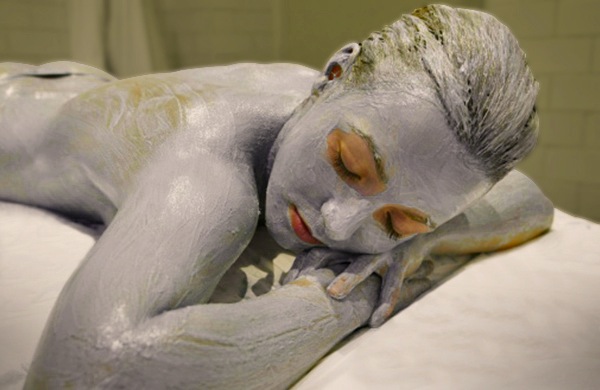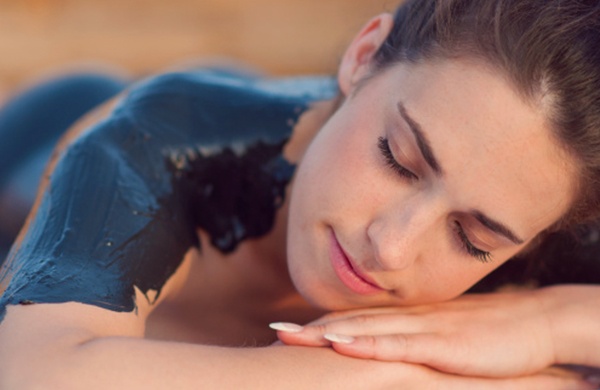
The term “mud bath” seems paradoxical. How do you bathe in something that makes you dirty? And more importantly, why would you?
The short answer: spending some time up to your neck in mud can be good for your skin. The longer answer, however, is a bit more nuanced and involves a closer look at fangotherapy—treatments that involve mud. Read on for four key fangotherapy facts, which may convince you to act like a pig at your next spa visit.
1. People have been rolling in the mud for centuries.
And not just for fun! Native Americans have used mud to treat irritated skin, and Cleopatra reputedly took trips to the Dead Sea and coated herself with its mud as part of her beauty regimen. Both Napoleon and Beethoven were fond of visiting the Czech spa resorts of Karlovy Vary, which have been espousing the benefits of the region’s hot springs and mud since the 1300s.
Then there’s the story of the blind man Tekir and his donkey, a folktale from Lake Techirghiol in Romania. According to legend, Tekir was riding his faithful donkey when they both became hopelessly mired in the mud of the lake. They emerged hours later, only to realize that the mud had cured Tekir’s blindness as well as the rest of his (and his donkey’s) various ills. Mud from Lake Techirghiol has been prized and harvested for its therapeutic properties since the early 1900s.
Some of these anecdotes may be far-fetched, but they all convey the single most important fact about fangotherapy:
2. The secret to finding great mud: location, location, location.

Unfortunately, you can’t just wait until it rains, writhe around on your front lawn, and call it fangotherapy. The best kind of fangotherapy mud isn’t a simple mixture of water and soil—it’s rich in minerals, the kind that are only present under specific geological conditions, such as magnesium, sodium, and sulfur.
The Dead Sea, the European moorlands, certain lakes, and natural hot springs are the places to go for mineral-rich mud. The hot springs of Calistoga, California, compose the mud-bath capital of the United States. The mud there contains volcanic ash, and when mixed with mineral water from the surrounding hot springs, it’s an especially nutritious treat for skin cells.
Yalda Teranchi, a manager at Calistoga’s Indian Springs Spa, attests to this fact. “It’s a double whammy with the mud and the mineral water, [which comes] straight from the geyser,” she said, adding that using fresh mud makes a world of difference. “A spa I used to work at [ordered] volcanic ash to make its mud wraps. Here, it’s a little heavier because of the natural ingredients, the purities in it.”
If you can’t travel, however, you can always get cosmetics or schedule spa treatments that incorporate mineral-rich mud.
3. Getting down and dirty actually has some benefits.
Mud—especially Dead Sea mud—has been said to alleviate the symptoms of skin conditions like psoriasis, eczema, and rosacea. Being buoyed by a warm mud bath can also ease assorted aches and pains in the joints, such as those that stem from arthritis.
Some people bathe in mud for cosmetic reasons, too. Dr. R. Makala Anders, a dermatologist at Sonoma and Santa Rosa Dermatology, said the minerals in mud can indeed “rejuvenate and stimulate” skin cells, causing them to “plump up” for a more glowing appearance. He noted that mud is a great moisturizer, one that naturally causes skin to feel tighter and healthier.
And, of course, floating in a mud bath can be relaxing. “It’s getting back to the basics a little bit. … It’s very nurturing, it’s very centering,” Yalda said. “If you don’t mind being around a large quantity of naked people.”

4. But, like anything else, mud has its limits.
A mud bath, mud mask, or mud wrap should not be seen as a miracle treatment. “The effects [of a mud bath] would be pretty minimal and short-lasting, most of the time,” Dr. Anders said. That’s because the helpful minerals in mud can’t penetrate any deeper than the very first layer of the skin, the stratum corneum.
“The skin is made to keep stuff out!” he said. “It’s actually really difficult to make molecules small enough to penetrate down into the epidermis and beyond. Mud isn’t going to do that.”
That doesn’t mean that it won’t make you feel like a million muddy bucks, though. At least for a little while.

Check out primers on other unusual treatments:













